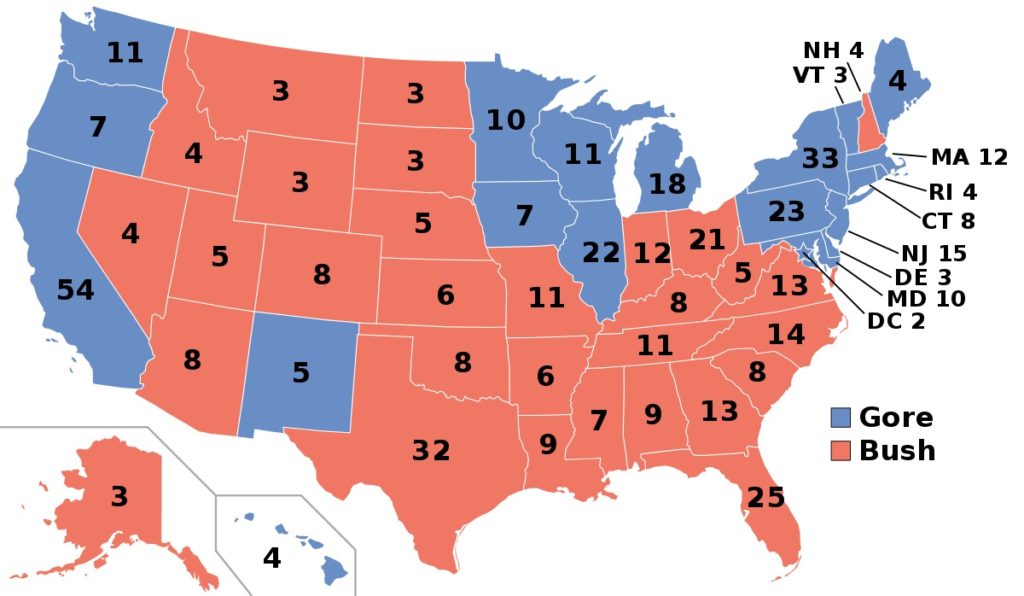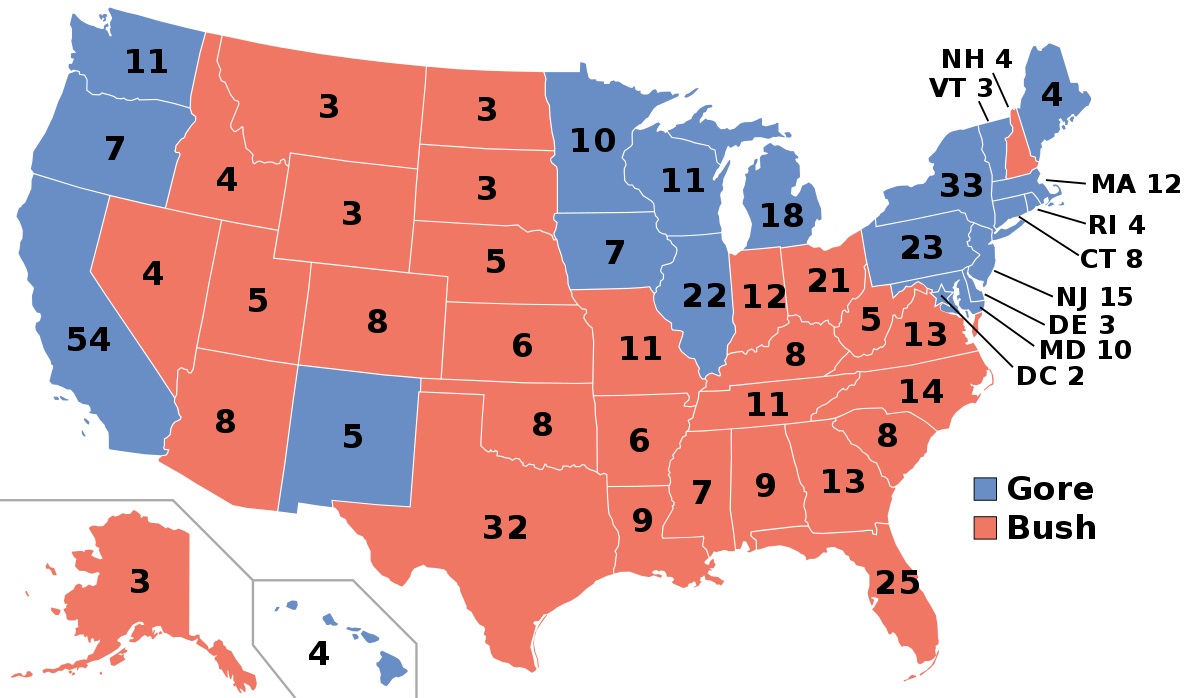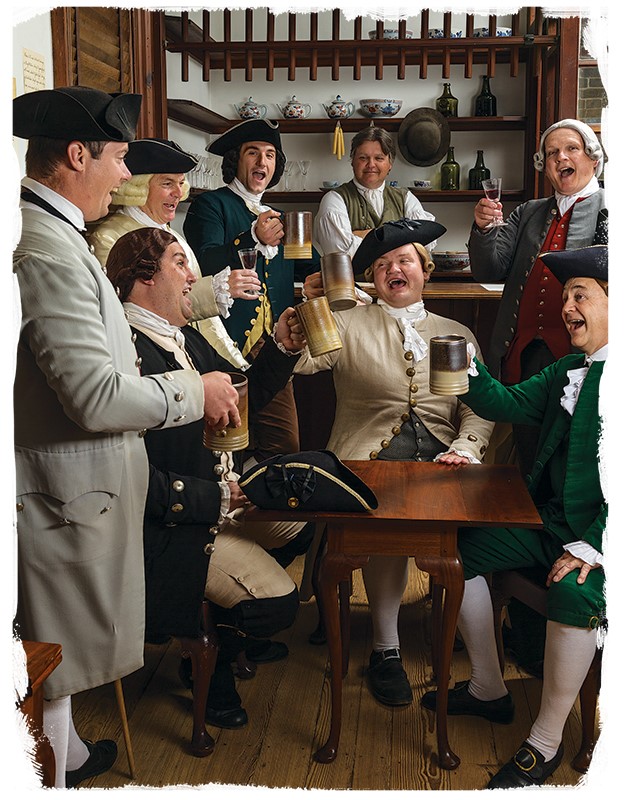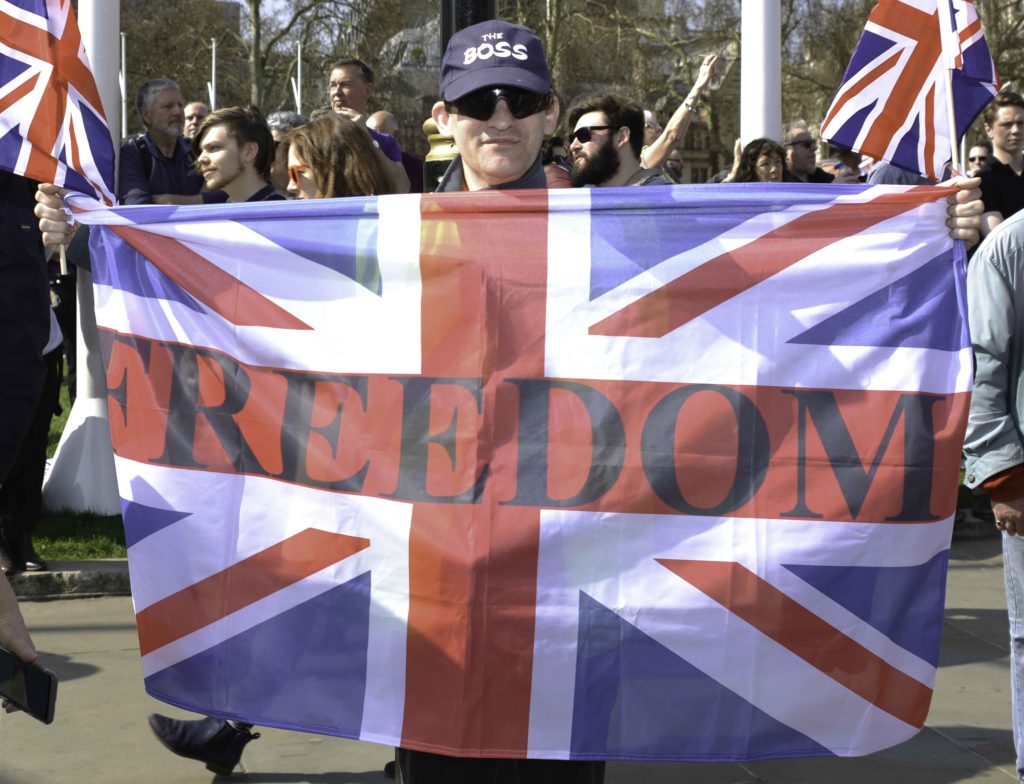
In the fourth part of Dan Heaton’s thesis discussing the United States Electoral College, he looks at Proposals for Reform of the Electoral College.
CHAPTER 3 – PROPOSALS FOR REFORM.(1)
Since its inception the Electoral College has been the subject of much debate both in the world of academia and in Congress. From 1889 until 2000 some 587 constitutional amendments, proposing Electoral College reform have been introduced into Congress.
“The Electoral College discriminates in favour of the less populous states by guaranteeing them at least 3 Electoral Votes. Thus there is not a proportional distribution of Electoral College Votes between the states based on population. This creates a situation therefore in which the value of an individual’s vote differs between different states”
A History of Recent Reform Proposals.
Whilst there have been numerous proposals to abolish or reform the Electoral College, these proposals seem to periodically become more prevalent in the midst or aftermath of close or controversial elections.
1969 H.J. RES 681.
This amendment was proposed by Representative Celler during the 91st Congress. It provided for the abolition of the Electoral College and its replacement with a direct popular election for President and Vice-President. In order to win a candidate had to receive not only the most votes but also at least 40% of all votes cast. Should no one candidate receive the 40% threshold then there would be a runoff between the two leading candidates. The proposition was defeated in the Senate having passed through the House of Representatives.
It was able to succeed to the extent that it did following the close election of 1968 when the candidacy of George C. Wallace, the American Independent Party Candidate looked as though it might push the election into Congress for a contingent election.
1979 S.J. RES 28., 96th Congress
This proposal, advocating direct popular election, was approved by the Senate by 51 votes to 48 but this fell short of the two-thirds majority needed for a constitutional amendment. This proposal followed the close election of 1976 in which Jimmy Carter won with 50.1% of the popular vote and one Republican elector voted for the Libertarian Party candidate. (2)
1992 S.J.RES 297, S.J. RES 302 and S.J. RES 312, 102nd Congress.
In 1992 the prominent candidacy of Ross Perot looked for a time as if it might take the election into Congress for a contingent election. Thus, hearings were held on all three of the above direct election proposals.
Whilst the above proposals were not successful the recent debacle has again raised the ire of opponents of the Electoral College. The Florida fiasco has already spawned a number of proposals, which have been introduced in the 107th Congress since it first met in January 2001.
I propose to use the remainder of this chapter to outline the proposals, which have so far been submitted for consideration and to assess the effectiveness of each in solving the ills of the current system so commonly asserted by its opponents. In order to achieve this assessment it would be of an advantage to briefly summarise the ills of the Electoral College as examined in depth earlier in this work. [Chapter 2]
The “Faithless“ Electors.
The problem caused by electors voting for candidates other than those to whom they have pledged support.
The Election of a President Who Does not Receive a Majority of the Popular Vote.
It is possible that a candidate may win the presidency without securing a majority of the popular vote, thus in effect a President is elected who more people voted against than for.
The Election of a President Who Does Not Win a Plurality of the Popular Vote.
It is technically possible for a candidate to actually win the Electoral Vote despite the fact that another candidate has won more popular votes than he has.
Malapportionment and Voter Dilution.
The Electoral College discriminates in favour of the less populous states by guaranteeing them at least 3 Electoral Votes. Thus there is not a proportional distribution of Electoral College Votes between the states based on population. This creates a situation therefore in which the value of an individual’s vote differs between different states and thus some people’s votes are diluted.
The “Winner Takes All” System and the Disenfranchising of Minorities.
It is argued that the “Winner Takes All” system of selecting a states electors, whereby all of a state’s Electoral College votes are awarded to the winner of the statewide popular vote disenfranchises minorities. It is suggested that, the system used in 48 states and the District of Columbia, discriminates against minorities in each state as those who vote against the statewide winner do not have their votes counted towards the election of the President.
The Contingent Election.
The system used to elect a President and Vice-President when no candidate receives a majority of the Electoral Vote. It is argued that this system is even more disproportionate in favour of the less populous states than the apportionment of Electoral College Votes. This is because, in selecting the President, the House of Representatives vote as states and not as individuals and each state is guaranteed at least 1 Representative no matter what their population and when selecting the Vice-President, the Senators vote as individuals, there are still two Senators per state no matter what its population.
Reform Proposals in 107th Congress.
There have been a number of reform proposals made in the 107th Congress, which I will deal with under the following headings:
- Direct Popular Election.
- District Plans.
- Proportional Plans
- Hybrid Plans.
Direct Popular Election Proposals.
There have been two such proposals laid before Congress since January 2001.
H.J. RES 3 107th Congress, was introduced to the House of Representatives on January 3rd 2001 and provided as follows:
SECTION 1. The President and Vice President shall be elected by the people of the several States and the district constituting the seat of government of the United States.
SECTION 2. The electors in each State shall have the qualification requisite for electors of Senators and Representatives in Congress from that State, except that the legislature of any State may prescribe less restrictive qualifications with respect to residence and Congress may establish uniform residence and age qualifications.
SECTION 3. The persons having the greatest number of votes for President and Vice President shall be elected.
SECTION 4. Each elector shall cast a single vote jointly applicable to President and Vice President. Names of candidates may not be joined unless they shall have consented thereto and no candidate may consent to the candidate’s name being joined with that of more than one other person.
SECTION 5. The Congress may by law provide for the case of the death of any candidate for President or Vice President before the day on which the President-elect or Vice President-elect has been chosen, and for the case of a tie in any election.
SECTION 6. This article shall apply with respect to any election for President and Vice President held after the expiration of the 1-year period which begins on the date of ratification of this article.
The amendment proposal establishes direct election “by the people2 through Section 1 and through Section 3 provides that The person having the greatest number of votes” shall be President. Section 2 would give Congress new powers to set uniform residence requirements and to set a uniform voting age. Section 4 enshrines the principle of running mates by allowing voters only to vote for one set of joined candidates for the Presidency and Vice Presidency. Section 5 gives Congress the power to provide a remedy in case of the death of a candidate or if there is an electoral tie.
The proposal does eliminate the possibility that a president can be elected despite another candidate receiving more votes than him. This is explicit in Section 3 “The persons having the greatest number of votes for President and Vice President shall be elected”. However, the proposal does nothing to alter the fact that a President can be elected who does not obtain a majority of the votes. It is quite possible that in only a three way contest that a candidate could obtain as little as 34% of the national vote and still be elected President. Previous proposals such as H.J. RES 681 91st Congress in 1969 contained a 40% threshold, that a candidate had to achieve in order to be elected however, this proposal contains no such provision and so a minority President whom most voters voted against could still be elected.
By adopting direct popular election the amendment does eliminate the problem of faithless electors, as the position of elector is abolished. The problem of malapportionment and voter dilution is effectively circumvented as each vote in the country becomes of equal value and the winner takes all system is abolished along with the states electoral votes. However, the thorny issue of the contingent election is not totally put to rest by the amendment. Whilst admittedly the possibility of a tie in a nation-wide popular vote is extremely unlikely the amendment only states that “Congress may by law provide…for the case of a tie in any election.” Although the adoption of direct popular vote makes this issue practically redundant, the amendment would still allow Congress to decide the fate of the Presidency.
H.J. RES 5 was introduced to the House of Representatives on January 30th 2001 by Representative Delahunt and provides as follows:
SECTION 1. The President and Vice President shall be elected by the people of the several States and the District constituting the seat of government of the United States.
SECTION 2. The electors in each State shall have the qualification requisite for electors of Senators and Representatives in Congress from that State, except that the legislature of any State may prescribe less restrictive qualifications with respect to residence and Congress may establish uniform residence and age qualifications.
SECTION 3. The name of each candidate for President shall be paired with the name of a candidate for Vice President, and each elector shall cast a single vote for a pair of candidates. Names of candidates may not be joined unless they shall have consented thereto and no candidate may consent to the candidate’s name being joined with that of more than one other person.
SECTION 4. The Congress may by law provide for the case of a tie between the two candidates receiving the greatest number of votes for President and Vice President in any election.
SECTION 5. Each State shall prepare a list of each candidate for President and each candidate for Vice President who received votes in the State and the number of votes each candidate received, and shall sign, certify, and transmit the list to the seat of the Government of the United States, directed to the President of the Senate. The President of the Senate shall, in the presence of the Senate and House of Representatives, open all of the certified lists transmitted by the States, and the votes shall then be counted. The persons having the greatest number of votes for President and Vice President shall be elected.
SECTION 6. Congress shall have the power to enforce this article by appropriate legislation.
SECTION 7. This article shall apply with respect to any election for President and Vice President held after the expiration of the 1-year period which begins on the date of the ratification of this article.
H.J. RES 5 also establishes direct popular election of the President and Vice President, however, it does not empower Congress to provide for cases in which a candidate dies. The article provides a procedure for vote counting similar to that of the current system with the states counting the votes and sending the results to Congress to be collated. The article also differs from H.J. RES 3 in that it provides for Congress to enact legislation to enforce the amendment. This provision simply provides that the candidate who receives the most votes shall be the winner. There is no requirement for a majority of votes or even a threshold and so the possibility of a minority President remains.
Both of the above direct popular election proposals currently before Congress are open to the usual criticisms that direct election proposals face. Direct election detracts from the federalist nature of the Union, the candidates may only give weight to the opinions of voters in the most populous regions and so can be elected without obtaining broad nationwide support. Direct election may also detract from minority interests in that by definition a candidate will wish to appeal to the vast majority of the electorate and a nationwide vote may require a national, costly and time consuming recount.
H.J. RES 5 may circumvent the problem of costly recounts by specifying that the states should count the votes, however, as neither proposal requires a majority of votes to win nor sets a threshold a candidate could be elected with a relatively low percentage of the national vote. Whilst the direct election should encourage more candidates and therefore a greater choice, a system which does not require a majority of votes or even set a threshold will still see candidates such as Ralph Nader seen as wreckers. A system without preferential voting or a run off will see a vote for a minority candidate directly detract from another candidate and thus the two party system would probably be maintained with voters voting for the candidate they perceive as the lesser of two evils rather than their preferred candidate just as at present.
District Plan Proposals.
H.J. RES 1 was introduced in the House of Representatives on January 3rd 20001 by Representative Clyburn and proposes the following:
SECTION 1. In an election for President and Vice President, each State shall appoint two Electors to vote for the candidates for President and Vice President who received the greatest number of popular votes cast in the State for such election and, for each congressional district established pursuant to section 2 of this article, one Elector to vote for the candidates for President and Vice President who received the greatest number of popular votes in that district.
SECTION 2. For purposes of section 1 of this article, each State shall by law establish a number of districts equal to the number of Representatives in Congress to which such State is entitled. All such districts shall be established by the States at such intervals as the Congress by law provides. Any district established for the election of Representatives in Congress as of the date of the ratification of this article shall be considered to be established pursuant to this section.
SECTION 3. For purposes of this article, the District constituting the seat of Government of the United States shall be treated as if it were a State, except that the number of electors for the District may not exceed the number of electors for the least populous State.
SECTION 4. The Congress may by law provide for the case of the death of any candidate for President or Vice President before the day on which the President-elect or Vice President-elect has been chosen, and for the case of a tie in any election.
SECTION 5. The Congress shall have the power to enforce this article by appropriate legislation.
SECTION 6. This article shall apply with regard to any election for President and Vice President that is held more than one year after the date of the ratification of this article.
Under this proposal the President and Vice President would be elected under a district plan system. Under the district plan two Electoral College votes representing a state’s Senators would be awarded to the winner of the statewide popular vote whilst those Electoral College Votes representing a state’s Representatives would be allocated to the winners of those electoral districts. Under Section 2 however, the districts, at the state’s discretion. Could be the existing Congressional Districts or ad hoc electoral districts created for the presidential election, equal in number to the Congressional Districts. Under Section1 the office of Presidential Elector is retained and under Section 4 the Contingent election process is retained for the purposes of a tie. There is no provision for electoral running mates as there is no requirement for a single joint vote and very importantly there is no requirement for the winning candidate to receive a majority of the Electoral Votes. Under Section 4 the contingent process is only used in the case of a tie.
This system would maintain the concept of federalism, but would retain the much maligned contingent election and would allow the possibility of a minority President, not only in terms of the national popular vote but also in the Electoral College. The system would enhance minority interests as it is likely that they would be of a sizeable portion of the voters in many of the districts, assuming that there was no gerrymandering, however, the less populous states would still be over represented.
H.J.RES 18 was introduced in the House of Representatives on February 13th 2001 by Representative Engel and states as follows:
SECTION 1. In an election for President and Vice President, each State shall appoint two Electors to vote for the candidates for President and Vice President that received the greatest number of popular votes in that State and, for each congressional district established under section 4 of this article, one Elector to vote for the candidates for President and Vice President that received the greatest number of popular votes in that district. The candidate having the greatest number of electoral votes for President shall be the President. The candidate having the greatest number of electoral votes for Vice President shall be the Vice President.
SECTION 2. If two or more candidates receive an equal number of electoral votes for President and such number is greater than the number of such votes received by any other candidate, then from the candidates who receive such equal number of votes the House of Representatives shall choose immediately, by ballot, the President. But in choosing the President, the votes shall be taken by States, the representation from each State having one vote; a quorum for this purpose shall consist of a member or members from two-thirds of the States, and a majority of all the States shall be necessary to a choice.
SECTION 3. If two or more candidates receive an equal number of electoral votes for Vice President and such number is greater than the number of such votes received by any other candidate, them from the candidates who receive such equal number of votes the Senate shall choose the Vice President; a quorum for the purpose shall consist of two-thirds of the whole number of Senators, and a majority of the whole number shall be necessary to a choice.
SECTION 4. Each State shall by law establish, for the election of Representatives in the Congress and for purposes of section 1 of this article, a number of districts equal to the number of Representatives to which such State is entitled. All such districts shall be established by the States at such intervals as the Congress by law provides. Any district established for the election of Representatives in the Congress as of the date of the ratification of this article may be considered to be established pursuant to this section.
SECTION 5. For purposes of this article other than sections 2 and 3, the District constituting the seat of Government of the United States shall be treated as if it were a State, except that the District may not appoint a number of Electors greater than the number of Electors appointed by the least populous State.
SECTION 6. The Congress shall have the power to enforce this article by appropriate legislation.
SECTION 7. This article shall apply with regard to any election for President and Vice President that is held more than one year after the date of the ratification of this article.
This proposal also provides for the election of the President and the Vice President by use of a district plan. Like H.J. RES 1 it does not require that the winners obtain a majority of the electoral votes, merely requiring that the candidates with the most electoral votes are the winners. It also explicitly maintains the current contingent election process in case of a tie, maintaining the 12th Amendment provision of one state one vote in the House for electing the President.
The proposal is therefore open to the same criticisms as H.J. RES 1 especially in that it allows a candidate to win the Presidency without receiving a majority of the electoral votes never mind a majority of the popular vote.
H.J. RES 37 was introduced in the House of Representatives on March 13th 2001 by Representative Clement and proposes the following:
SECTION 1. In an election for President and Vice President, each State shall appoint one elector for each district in that State represented by a member of the House of Representatives. Each elector shall cast a vote for the candidates for President and Vice President who received the greatest number of popular votes in that district.
SECTION 2. Each State shall appoint two electors who shall each cast a vote for the candidates for President and Vice President who received the greatest number of popular votes in that State.
SECTION 3. Electors for the District constituting the seat of Government of the United States as provided by the twenty-third article of amendment shall each cast a vote for the candidates for President and Vice President who received the greatest number of popular votes in the District.
SECTION 4. If no candidate for an office receives a majority of the votes cast by the electors, then from the two candidates for that office receiving the highest number of electoral votes, the House of Representatives shall choose immediately, by ballot, one candidate who shall serve in that office.
SECTION 5. If ratification of this article by three fourths of the several States occurs within the calendar year of a Presidential election, this article shall not take effect until the following Presidential election.
SECTION 6. Congress shall have the power to enforce this article by appropriate legislation.
This article proposes use of a district system. It differs from the previous two district plan proposals in that it requires the District of Columbia votes to be given to the District wide winner no matter how many votes the District may be entitled to in the future. The amendment also provides that a candidate must obtain a majority of the electoral votes in order to win the Presidency. The system proposed also maintains an adapted contingent election process. In the new version of the contingent election the House of Representatives would vote for both President and Vice President leaving the Senate out of the process. The House would also implicitly vote as individuals rather than as states.
The system proposed in H.J.RES 37 still allows the possibility of a minority president and even one who received less popular votes than the loser, however, this is reduced because of the better representation of the minority vote in the several states. Such outcomes are also possible in the case of a contingent election but this is somewhat more representative because the vote would be taken by individuals rather than over-representing the smaller states and the removal of the Senate from the process.
Overall the district plan proposals are more representative of minorities than the winner takes all system. It allows minorities whether they be inner city ethnic or rural communities more leverage in that they are able to gain representation through the congressional district electoral votes. Nonetheless, the issue remains that a minority President can be elected and a winner of the national vote may also lose although the likelihood is greatly reduced.
Proportional Plan.
H.J RES 17 was introduced to the House of Representatives by Representative Engel on February 13th 2001 and provides: as follows:
SECTION 1. In an election for President and Vice President, each State shall appoint a number of Electors to vote for each candidate for President or Vice President that bears the same ratio to the total number of Electors of that State as the number of votes received by that candidate bears to the total number of votes cast in that State. Each State shall make computations for purposes of carrying out this section in accordance with such laws as it may adopt, including laws providing for the allocation of Electors among more than two candidates receiving 5 per cent or more of the total number of votes cast in the State under such criteria as the State may by law establish, except that fractional numbers less than one one-thousandth shall be disregarded. The candidate having the greatest number of electoral votes for President shall be the President. The candidate having the greatest number of electoral votes for Vice President shall be the Vice President.
SECTION 2. If two or more candidates receive an equal number of electoral votes for President and such number is greater than the number of such votes received by any other candidate, then from the candidates who receive such equal number of votes the House of Representatives shall choose immediately, by ballot, the President. But in choosing the President, the votes shall be taken by States, the representation from each State having one vote, a quorum for this purpose shall consist of a member or members from two-thirds of the States, and a majority of all the States shall be necessary to a choice.
SECTION 3. If two or more candidates receive an equal number of electoral votes for Vice President and such number is greater than the number of such votes received by any other candidate, then from the candidates who receive such equal number of votes the Senate shall choose the Vice President; a quorum for the purpose shall consist of two-thirds of the whole number of Senators, and a majority of the whole number shall be necessary to a choice.
SECTION 4. For purposes of this article other than sections 2 and 3, the District constituting the seat of Government of the United States shall be treated as if it were a State, except that that the District may not appoint a number of Electors greater than the number of Electors appointed by the least populous State.
SECTION 5. The Congress shall have the power to enforc1e this article by appropriate legislation.
SECTION 6. This article shall apply with regard to any election for President and Vice President that is held more than one year after the date of the ratification of this article.
This proposal would adopt a proportional system to elect the President and Vice President. Essentially, the candidates would receive the proportion of state’s electoral votes in ratio to the proportion of the popular votes they received in that state. The proposal would however, require a candidate to obtain five per cent of a state’s popular votes before receiving any of that state’s electoral votes. The amendment does not require that the winner should have a majority of the electoral vote or any minimum percentage of the popular vote, therefore a President could be elected who received fewer popular votes than another candidate, and a minority president both in terms of electoral and popular votes is possible. The system also maintains the current contingent election system in Congress in the event of an electoral tie.
The system does protect minorities in that every vote in a state, no matter where in that state it is cast, is of equal value in that state and it also maintains the federalist principal. The system does deter third party candidates, as they would require five per cent of the popular votes in a state before obtaining any electoral votes. However, this helps to require a candidate to obtain a broad base of support as whilst a candidate may obtain large percentages in some states they would be wise to attempt to obtain at least that vital five per cent of the vote instates in which they are less popular.
A Hybrid Proposal.
H.J. RES 25 was proposed by Representative Leach on March 1st 2001 and included the following provisions:
SECTION 1. The President and Vice President shall be elected in accordance with this article by the people of the several States and of the District constituting the seat of Government of the United States. The electors in the District shall have such qualifications as Congress may by law prescribe, and the electors in each State shall have the qualifications requisite for electors of the most numerous branch of the State legislature.
SECTION 2. On the day designated by Congress for holding an election for President and Vice President, each elector shall cast a single vote jointly applicable to a pair of candidates for President and Vice President. The candidate for President and the candidate for Vice President shall be clearly indicated within each pair. The names of candidates for President and Vice President shall not be joined as a pair unless both candidates shall have consented thereto and no name of a candidate may be joined with that of more than one other person.
SECTION 3. The times, places, and manner of holding an election for President and Vice President shall be regulated in the District by Congress, and in each State by the legislature thereof, except that Congress may at any time make or alter such regulations.
SECTION 4. Each State shall have the number of electoral votes that is equal to the number of Senators and Representatives in Congress to which such State is entitled. The District shall have the number of electoral votes that is equal to the number of Senators and Representatives in Congress to which the District would be entitled if it were a State. The legislature of each State shall determine whether to apportion the electoral votes of such State in accordance with the provisions of Section 5 or section 6.
SECTION 5. The legislature of any State may determine to, and the District shall, apportion all of the electoral votes of such State or the District to the pair of candidates for President and Vice President that received the greatest number of votes in such State or District.
SECTION 6. The legislature of any State may determine to apportion two of the electoral votes of such State to the pair of candidates for President and Vice President that received the greatest number of votes in such State, and to apportion one electoral vote, for each district from which a Representative from such State is elected, to the pair of candidates for President and Vice President that received the greatest number of votes in such district.
SECTION 7. The chief executive of each State and the District shall, within thirty days after an election for President and Vice President, transmit a signed and sealed certificate to the President of the Senate stating the number of electoral votes of such State or District that are apportioned to each pair of candidates for President and Vice President, and the total number of votes received in such State or District by each pair of candidates for President and Vice President. The President of the Senate shall, in the presence of the Senate and House of representatives, open all the certificates and announce the contents.
SECTION 8. The pair of candidates for President and Vice President who received the greatest number of votes, with such number determined by calculating the sum of the total number of votes received by each pair of candidates for President and Vice President in each State and the District and required to be stated in the certificates to the President of the Senate, shall be apportioned a number of additional electoral votes equal to the product of two times the sum of the number of States and the District.
SECTION 9. The pair of candidates for President and Vice President receiving the greatest number of electoral votes shall become President and Vice President, if such number be a majority of the sum of the number of additional electoral votes and the number of apportioned electoral votes required to be stated in the certificates to the President of the Senate.
SECTION 10. If no pair of candidates for President and Vice President receives such majority, then the House of Representatives shall choose immediately, by ballot, the President from the candidates for President, not exceeding three, receiving the highest number of electoral vote when paired with a candidate for Vice President, and the Senate shall choose the Vice President from the candidates for Vice President receiving the two highest number of electoral votes when paired with a candidate for President. In choosing the President, one round of votes shall be taken first by State, the representation from each State having one vote. A quorum for such purpose shall consist of a member or members from two-thirds of the States, and a majority of all States shall be necessary to a choice. If no candidate for President receives such majority, then the House of Representatives shall choose immediately, by ballot, the President from the same such candidates, with each Representative having one vote. A quorum for such purpose shall consist of two-thirds of the whole number of Representatives, and a majority of the whole number of Representatives shall be necessary to a choice. In choosing the Vice President, each Senator shall have one vote, a quorum shall consist of two-thirds of the whole number of Senators, and a majority of the whole number of Senators shall be necessary to a choice.
SECTION 11. This article shall apply with respect to any election of a President and Vice President to a term of office commencing later than two years after the date of the ratification of this article.
This proposal provides States with a choice of how to allocate their electoral votes. Under Section 5 they may use the current winner takes all system or under Section 6 they may use the district plan.
The proposal includes an innovation in that an extra 102 national electoral votes would be awarded to the candidate who won the most national popular votes. Thus the winner of the election would be the candidate who won a majority of all the votes, the currently allocated electoral votes plus the national bonus votes.
The resolution also alters the contingency election process. The process retains the House of Representatives choosing the President from the top three candidates, and the Senate choosing the Vice President from the top two candidates. However, if there is no winner in the House of Representatives then the Representatives vote again but as individuals rather than as States.
The proposal in giving the States a choice on how to allocate their electoral votes in fact would make very little difference as they already have this choice. Nebraska and Maine use the district system whilst the other 48 States and the District of Columbia use the winner takes all. The only thing that the provision does is to in effect ban a State from using a proportional system.
The bonus scheme proposal whereby 102 extra votes would be awarded to the winner of the national popular vote, would in effect take away the possibility of a candidate winning the national popular vote but losing the electoral vote as in a close election the 102 extra votes would more than outweigh any difference in the electoral vote.
However, the system does not guarantee that the winner will have a majority of the popular vote and the problem of malapportionment still exist even if to a lesser extent. The use of the national vote could result in numerous recounts if it becomes crucial in a close race.
“none of the current proposals before Congress are a panacea to the defects which opponents of the Electoral College denounce so vehemently”
It is clear that none of the current proposals before Congress are a panacea to the defects which opponents of the Electoral College denounce so vehemently. All of the proposal have their advantages, whether it be greater representation of minorities whilst maintaining the concept of federalism in district plans or the simple appeal of one man one vote as in the direct election proposals.
In the next chapter I shall look at the systems by which the sneering European “democracies” select their heads of state in order to see whether the United States can learn anything and whether indeed the Europeans have the right to be so complacent about their own systems.
Notes
- See generally CRS Report for Congress RL 30804 “ The Electoral College: An Overview and Analysis of Reform Proposals” January 16, 2001 L. Paige Whitaker & Thomas H. Neale & Specifically CRS Report for Congress “The Electoral College: Reform Proposals in the 107th Congress” March 13, 2001, Thomas H. Neale.
- See earlier “Faithless Elector”
United States Electoral College
























